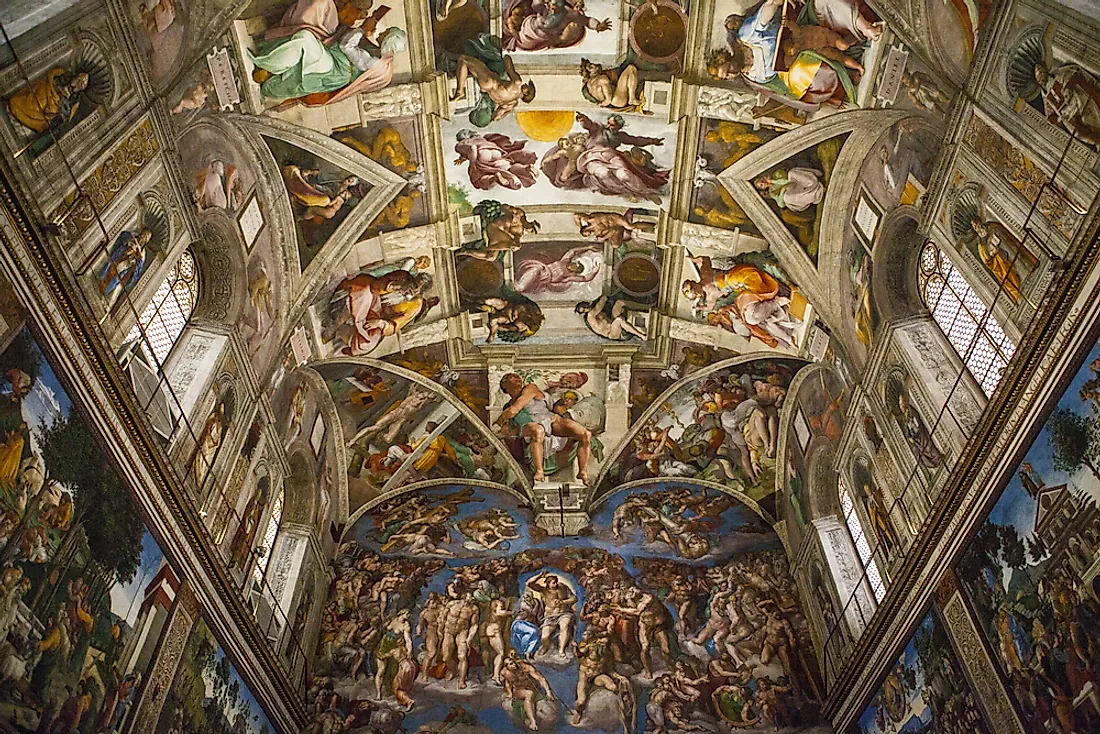Who Painted the Sistine Chapel?

The Vatican is home to many iconic buildings, exhibiting the best in Renaissance architecture. Top among them is the Sistine Chapel, a large chapel situated in the middle of Vatican City. The exterior magnificence of Sistine Chapel is only eclipsed by its interior beauty, where the ceiling and walls feature religious paintings unrivaled in iconic standing. The paintings are inspired by Christian beliefs and doctrines of the Church and showcase significant events in the religion such as the Creation and Fall of Man, the Flood, the Abrahamic Prophets, and the life and death of Jesus Christ. Much of the painting of the chapel is credited to Michelangelo, a renowned 16th-century painter, and sculptor whose name is synonymous with Renaissance art.
Michelangelo: Formative Years
Michelangelo was the best painter of his time, and often regarded among the best painters of all time. The renowned painter was born on March 6th, 1475 in the town of Caprese, Florence near modern-day Tuscany, Italy to an influential family (his father was a local administrator and former banker). Michelangelo’s mother died while the boy was only six years old, leaving Michelangelo to be raised by a nanny. In his youth, Michelangelo lived in Florence, which was then the kingdom’s most important hub for arts, where he nurtured his developing painting talent. Michelangelo would later travel around the kingdom, residing briefly in Bologna and Venice where he was exposed to a wide variety of paintings and sculptures, many of which would later be inspirations of his works of art. By his 20s, the painter’s reputation had spread, and word of his skills reached Rome in the late 15th century. While in Rome, Michelangelo would continue making awe-inspiring works of art, including the timeless “Pieta,” a sculpture of Virgin Mary holding the body of Jesus. The sculpture is currently domiciled at St. Peter’s Basilica. Upon returning to Florence, Michelangelo was commissioned to create what became his most renowned work; the Statue of David in the turn of the 16th century.
Painting the Sistine Chapel: Background
Michelangelo would return to Rome in 1505 to work on the Pope’s Tomb as directed by Pope Julius II. Up until this time Michelangelo was best known for his sculptures and not paintings. Sistine Chapel had been opened about two decades earlier in 1483, but the painting of the chapel’s interior was yet to be completed. The walls had already been painted by other great 15th century painters like Pietro Perugino, Botticelli, and Domenico Ghirlandaio (under whom Michelangelo had apprenticed).
Michelangelo's Painting of the Sistine Chapel
Michelangelo was directed by the Pope to paint the Chapel’s ceiling, who initially wished to have the Twelve Apostles painted. The painter convinced the Pope to accept instead a more complex painting on the chapel’s ceiling, to which the Pope obliged. The painting of the ceiling took about five years to complete; between 1508 and 1512. When complete, the entire painting on the ceiling covered about 5,382 square feet. Three distinct Christian themes inspired the painting; the Creation, the God-Mankind relationship, and the fall of humanity.











